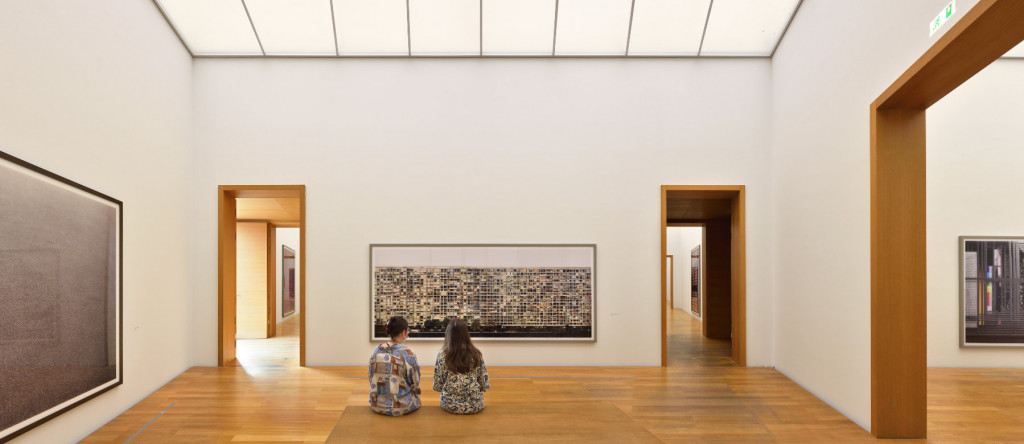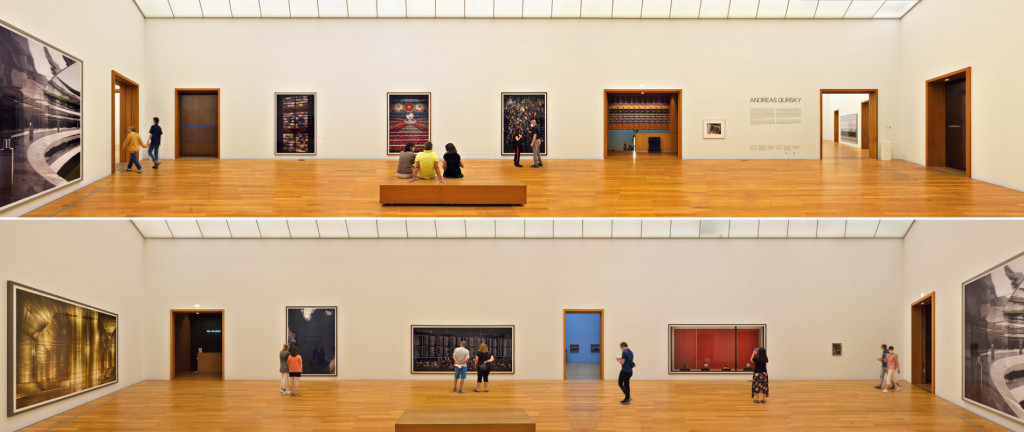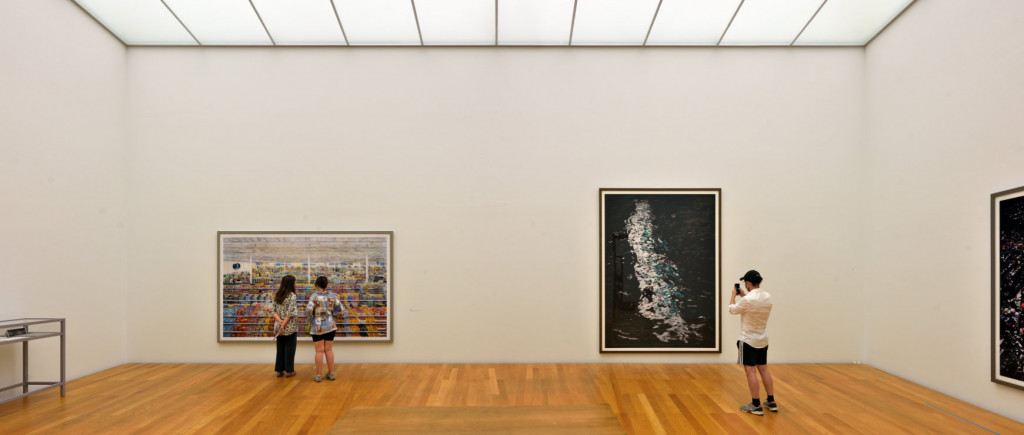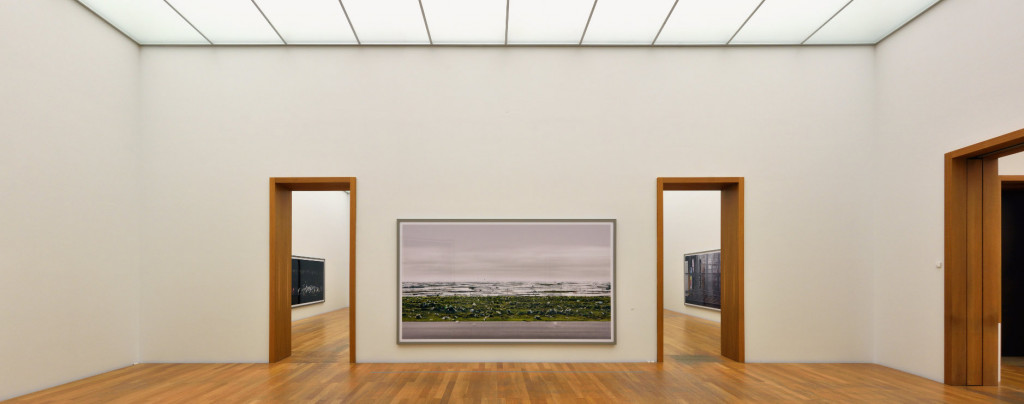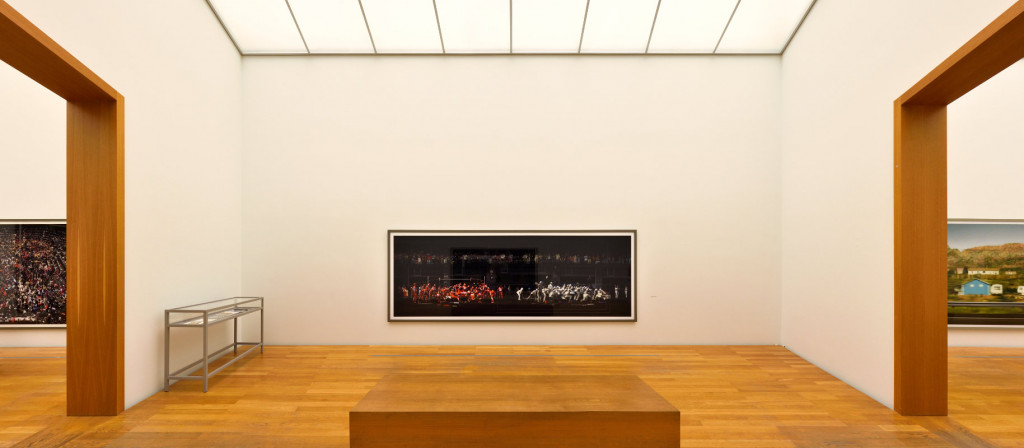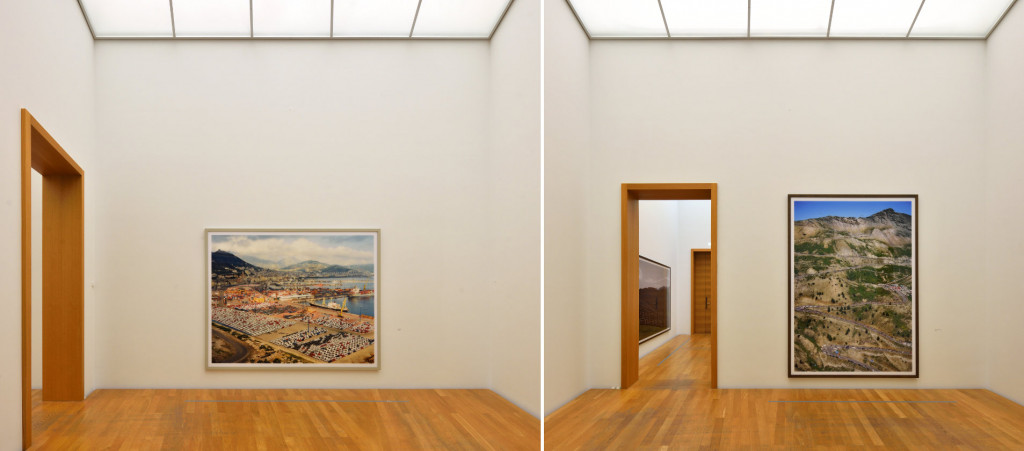2021 was the first time that the Museum of Fine Arts Leipzig (Museum der bildenden Künste, MdbK) presented a solo exhibition of the photographer Andreas Gursky in Leipzig, the city of his birth (25th march to 22nd august 2021). With around 60 works, including 50 large formats, the upper floor of the generously designed monumental new museum building in Leipzig’s city centre was filled. While the picture programme presents itself as an overview of Andreas Gursky’s oeuvre, showcases highlight the connection to his family history and the city of Leipzig. His father Willy Gursky and his grandfather Hans Gursky were already active as advertising photographers in the trade fair and commercial metropolis. Andreas Gursky himself grew up in Düsseldorf after the family moved there, studied photography at the Düsseldorf art academy and taught there as a professor of arts.
Paris, Montparnasse (1993)
Shortly before he exhibition closed, Andreas Gursky, his gallery Sprueth Magers and the MdbK Leipzig gave us permission to document the exhibition spaces with our multi-perspective series of photographs. The result is a selection of incomparable views of space. The effect of the large formats in the austere architecture of the Leipzig museum, but also the interactions of the works with each other and with the neighbouring rooms, come to the fore.
The centre of the exhibition was the large light hall on the third floor with its two long sides as well as the entrances to the staircase and the surrounding exhibition rooms. Here, the MdbK and Andreas Gursky presented the works Hong Kong Shanghai Bank II, Pyongyang I and Hamm, Bergwerk Ost on one side in addition to the introductory exhibition text. On the opposite wall were Ocean II, Frankfurt – a view inside the airport – and Rückblick – a view over the shoulder of four former German chancellors – as well as a small format untitled.
Lichtsaal im 3. Obergeschoss, beide Längsseiten
The works of Andreas Gursky can – with the means of photography – create entire pictorial cosms that are not unlike the pictorial worlds of great paintings. In a combination of digital image processing down to the smallest detail and extreme large formats, photographs are created that are worth diving deep into. In the process, Gursky wanders through themes that reflect the breadth of human life on earth – landscapes, architecture, interiors, politics, sport, modern culture and crowds of people. Each pictorial theme is given a clear structure so that the viewer can zoom in from the overall impression to the smallest detail. In doing so, he inevitably asks himself what degree of reality he is looking at and immediately begins to search the picture for the limits of this.
99 cent (1999), Bangkok VI (2011)
El Ejido (2017)
F1 Boxenstopp I (2007)
SH IV (2014), Spider Man © MARVEL und SH I (2013), Iron Man © MARVEL
In the works SH IV and SH I, Andreas Gursky devotes himself to the superhero theme and visualises them in artificial-fantastic imaginary copies of our reality. We have unfolded the room for our documentation in a three-sided view.
Salerno (1990), Tour de France (2007)
Finally, two works that were presented in one of the smallest rooms of the exhibition and in which our photographer Jörg Dietrich spent a particularly long time. Alongside one of the early large formats, Salerno, the large-format work Tour de France was presented here. In this work, two elongated mountain stages seem to be superimposed on each other in such a way that one is immersed in a photographic painting and can follow the drama of the legendary mountain stages of the Tour of France, as it is usually spread out over three quarters of an hour on the television screen.
The series of photographs in this exhibition documentation were taken with the kind permission of Galerie Sprueth Magers, the Museum of Fine Arts Leipzig, and the artist Andreas Gursky. They are published here with the kind permission of VG Bild-Kunst.

